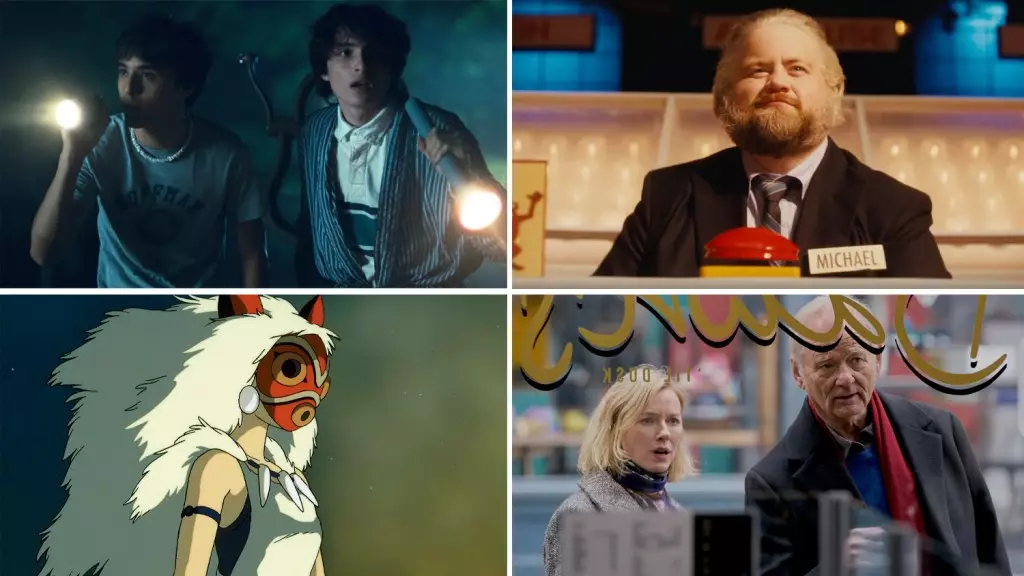As the cinematic landscape shifts gears, we find ourselves at a critical juncture where both blockbuster extravaganzas and indie gems vie for audience attention. This summer, with the highly anticipated release of a *Minecraft Movie*, the excitement is palpable among fans and industry insiders alike. While big studios prepare for what they hope will be a lucrative season, the independent film scene also showcases compelling narratives, featuring titles like Neon’s *Hell of a Summer* and IFC Films’ *The Luckiest Man in America*, which add variety to a traditionally formulaic summer roster.
However, it’s essential to recognize the contrasting realities these two sectors face. While mega-studios are often buoyed by nostalgic franchises and expansive budgets, many independent films struggle to find their footing in a market preoccupied with the flashy and familiar. This dichotomy begs the question: How do independent films continuously find a way to cast a captivating spell despite the gravitational pull of blockbusters?
Rising Tensions and Evolving Strategies
At CinemaCon, a gathering revered for shaping the industry’s future, discussions around box office performance highlighted the growing frustrations among exhibitors. The first quarter of the year was far from impressive, leaving many wary about the forthcoming releases. What’s brewing beneath the surface, however, is a crucial conversation about extended theatrical windows. This fundamental aspect may soon determine which films rise and which fade into obscurity, particularly as audiences increasingly gravitate towards streaming services.
Movies like *Hell of a Summer*, which promises not just thrills but also a unique blend of humor and horror, hope to lure audiences back into theaters. This film marks a significant directorial venture for Finn Wolfhard and Billy Bryk, demonstrating how fresh talent is stepping into leadership roles behind the camera. Whether this initiative successfully captivates a jaded audience remains to be seen, but it symbolizes a necessary shift. It urges us to believe that directors and storytellers who resonate with both Generation Z and Millennials can bring new life to the cinematic experience.
Storytelling in the Spotlight
Moving beyond the box office struggle, *The Luckiest Man in America* stands as a testament to the importance of storytelling in a saturated market. Centering on the curious case of Michael Larson, who famously outsmarted a game show, this depiction shines a light on the pursuit of dreams despite societal barriers. Its moderate rollout suggests that niche storytelling is still relevant, appealing to calculated audiences hungry for genuine connection rather than mere spectacle.
The film’s gripping narrative serves two purposes: it embodies the struggle against mediocrity, and it attempts to reclaim the idea that cinema can be both entertaining and thought-provoking. As more stories venture into these uncharted territories, it’s clear that the industry must embrace narratives grounded in authenticity, for it is this true essence that will resonate with audiences long after the credits roll.
The Power of Representation
Meanwhile, *A Nice Indian Boy* delves into complex family dynamics and the exploration of identity. The film provides a breath of fresh air by addressing LGBTQ+ themes within a culturally rich setting, which too often gets sidelined. Such narratives aren’t merely added for color; they reflect real struggles and adaptations that families must overcome, emphasizing the importance of acceptance in our rapidly evolving society.
Understanding how cinema can shape societal narratives is paramount. Films like these urge audiences to face uncomfortable truths while facilitating discussions about love, acceptance, and belonging. By introducing layered characters that audiences can relate to, filmmakers take a bold step that ultimately enriches the cinematic experience.
Revisiting Classics with a Fresh Lens
Moreover, the re-release of iconic films such as *Princess Mononoke* reaffirms that classics never lose their magic—they merely evolve with time. By revisiting these stories in IMAX formats, audiences are given an opportunity not only to see the artistry in a new light but also to participate in conversations that are more relevant today than when they first premiered. The blending of nostalgia with cutting-edge technology fosters a communal experience that can transcend generations, and it’s this phenomenon that studios must capitalize on.
Summer is traditionally about escapism and adventure; however, it can also cater to reflection and conversation. The cinema wielding the power to evoke such versatility is one that shapes cultural dialogues and societal truths. From nail-biting horror to heartfelt dramas, the offerings this summer leave us with more than just popcorn in hand—they present a chance to engage with diverse narratives that demand attention.
With all this richness at our fingertips, the box office struggles of early 2023 feel like a momentary blip in a much larger journey. The films are here, and they’re ready to challenge, inspire, and entertain in a climate ripe for opportunity. As we recharge our love for cinema, let us lift those projects that dare to break the mold.

